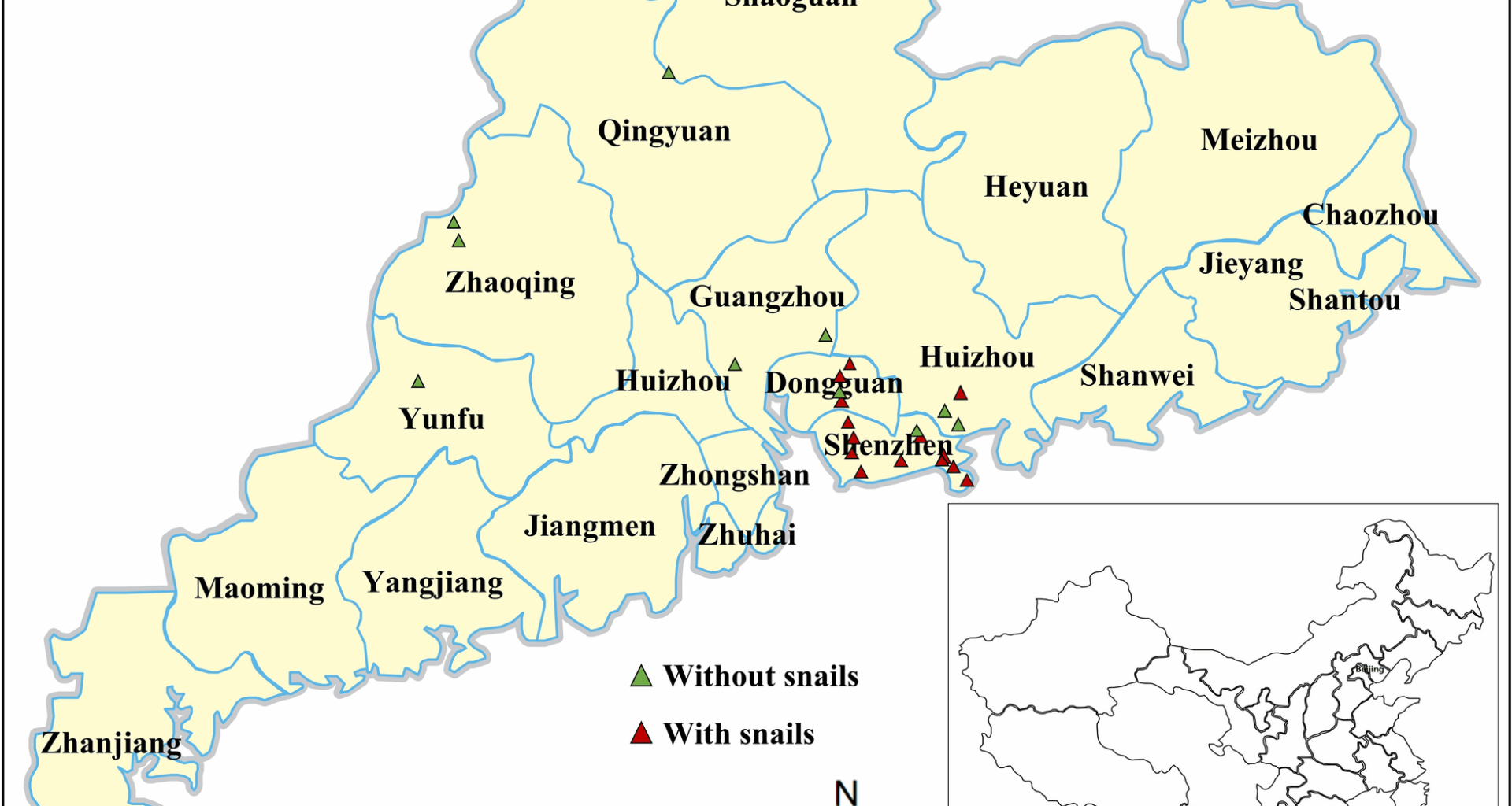This study provides critical insights into the morphology, phylogeny, and haplotype distribution of two invasive freshwater snails in Guangdong Province, China. Our findings reveal contrasting biological characteristics between P. acuta and B. straminea, with potential implications for disease surveillance and control strategies.
Genetic structure and divergence in Physa acuta
While P. acuta exhibited broad morphological consistency with global populations (shell height: 6.50–14.20 mm; width: 3.46–8.80 mm) [23,24,25], while mitochondrial COI-16S rRNA phylogenies revealed two geographically structured clades. Over 60% of Guangdong strains clustered with Cuban and Chilean lineages, while others grouped with North American P. acuta. This pattern is further supported by the haplotype network, where Hap_3, a dominant haplotype, was shared among populations in China, the Netherlands, and Chile [16, 26]. These results challenge earlier assumptions of a single East Asian invasion route [25], suggesting more complex introduction scenarios, possibly involving multiple independent events.
Although we detected 15 COI haplotypes among Guangdong P. acuta samples, we recognize that haplotype richness alone is insufficient to infer cryptic speciation. Instead, the observed mitochondrial diversity likely reflects population structuring driven by historical introductions. In contrast, nuclear markers (ITS, 18S, 28S rRNA) showed markedly lower variation and failed to distinguish geographic populations. This discrepancy reflects differences in mutation rates and inheritance patterns between mitochondrial and nuclear genomes. Mitochondrial DNA, with its rapid evolution and maternal inheritance, is more sensitive to recent demographic changes. Conversely, nuclear markers, particularly ribosomal genes, evolve slowly and may not detect fine-scale divergence, especially in recently introduced or admixed populations. Thus, while mitochondrial markers revealed regional structuring, the limited variation in nuclear loci supports low species-level divergence and suggests all sampled populations likely belong to the same biological species. To clarify lineage boundaries and potential cryptic diversity, future studies should integrate genome-wide nuclear data and reproductive compatibility assays.
Genetic homogeneity in Biomphalaria straminea: implications for schistosomiasis risk
Despite evident morphological plasticity (red/black color morphs and shell size variations), B. straminea populations in Guangdong displayed striking genetic homogeneity, clustering closely with South American conspecifics. The dominance of Hap_1 (98% of samples), shared with Brazilian and Venezuelan lineages, supports the hypothesis of a single successful introduction event, likely via maritime trade in the 1970s [2, 5, 6]. Red morphs, associated with reduced melanin synthesis [22], were observed alongside black phenotypes in high-risk zones (Shenzhen, Dongguan). While prior studies in congeneric species suggest a possible link between albinism and increased susceptibility to S. mansoni [2, 22], our findings remain observational and lack supporting infection data. Therefore, any association between color morphs and parasite susceptibility is speculative and warrants further experimental validation.
COI and 16S rRNA analyses revealed minimal genetic divergence, confirming a close affinity with South American B. straminea. This homogeneity, despite morphological variation, highlights the limitations of relying solely on mitochondrial markers or external morphology for population structure inference [19, 27]. Furthermore, we acknowledge that the exclusion of nuclear markers—such as ITS2 and 28S rRNA—due to amplification failure, limited our ability to achieve high-resolution phylogenetic reconstruction. As a result, concatenated nuclear–mitochondrial datasets, which are essential for detecting cryptic diversity or hybridization, could not be generated. Previous studies have demonstrated the value of multi-locus approaches in resolving evolutionary relationships within the Biomphalaria genus [9, 19, 28,29,30,31]. Future work should prioritize incorporating nuclear markers to clarify the evolutionary dynamics, population connectivity, and hidden diversity in B. straminea across China. Nevertheless, this study demonstrates that mitochondrial sequencing remains a practical and cost-effective approach for the initial surveillance of invasive snail populations.
In our 16S rRNA phylogeny (Fig. 7), B. kuhniana clustered closely with B. straminea but was genetically distinct from Chinese B. straminea. Morphological examination, including prostate branch analysis, confirmed the identification of Chinese specimens as B. straminea [2]. Brazilian B. straminea sequences included in the haplotype network and phylogenetic analyses clustered with Chinese samples, consistent with previous reports [5, 6]. However, the close genetic proximity between B. kuhniana and B. straminea, coupled with overlapping morphological traits, raises the possibility of cryptic speciation or unresolved taxonomic boundaries within the complex. Broader genomic datasets are needed for comprehensive taxonomic revision to clarify species delimitation and address possible misidentifications in South American reference samples.
Public health priorities and future directions
The co-occurrence of both snail species in 38% of sampled sites, particularly nutrient-rich rivers, poses dual risks for S. mansoni and A. cantonensis transmission. While B. straminea’s genetic uniformity may simplify control strategies, P. acuta’s mitochondrial diversity demands targeted monitoring of lineages linked to higher invasion success. Further studies should prioritize infection trials to assess vector competence across P. acuta haplotypes, high-resolution genomic analysis of pigmentation-related genes in B. straminea morphs, and broader surveillance using environmental DNA (eDNA) and remote sensing to track range shifts due to climate change [3, 32]. Although we emphasize the need to mitigate snail-borne diseases, this study did not include parasite screening. Therefore, national-scale surveillance of these vectors should incorporate pathogen detection, prevalence studies, and genomic analyses to better understand the eco-evolutionary dynamics of snail-borne diseases. Future research should include parasite screening (e.g., S. mansoni, A. cantonensis) using molecular and microscopic techniques to refine public health risk assessments.
